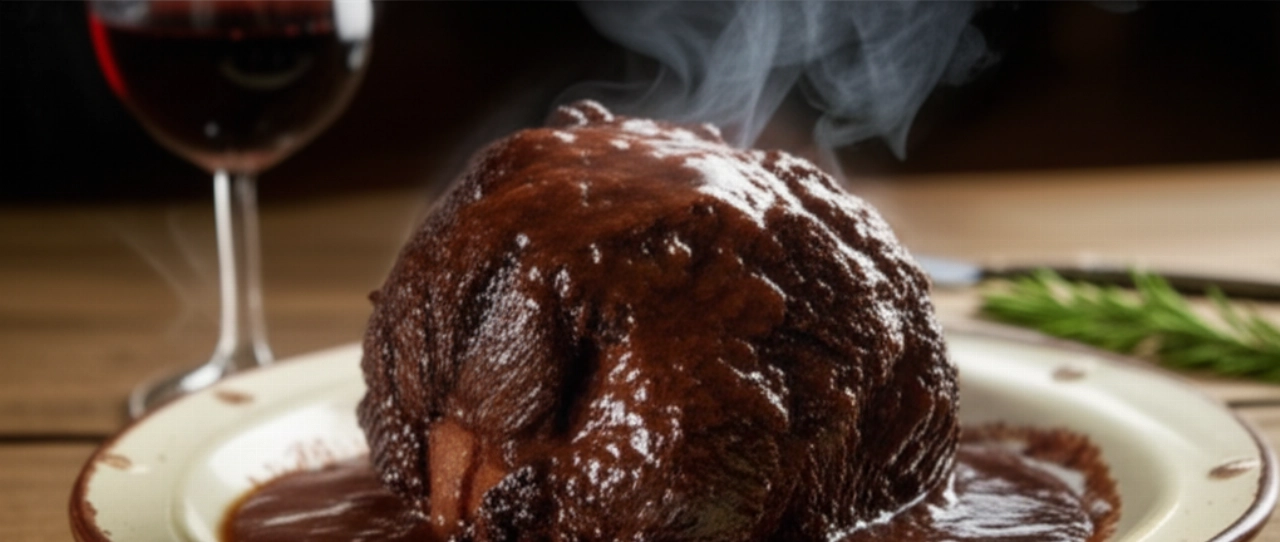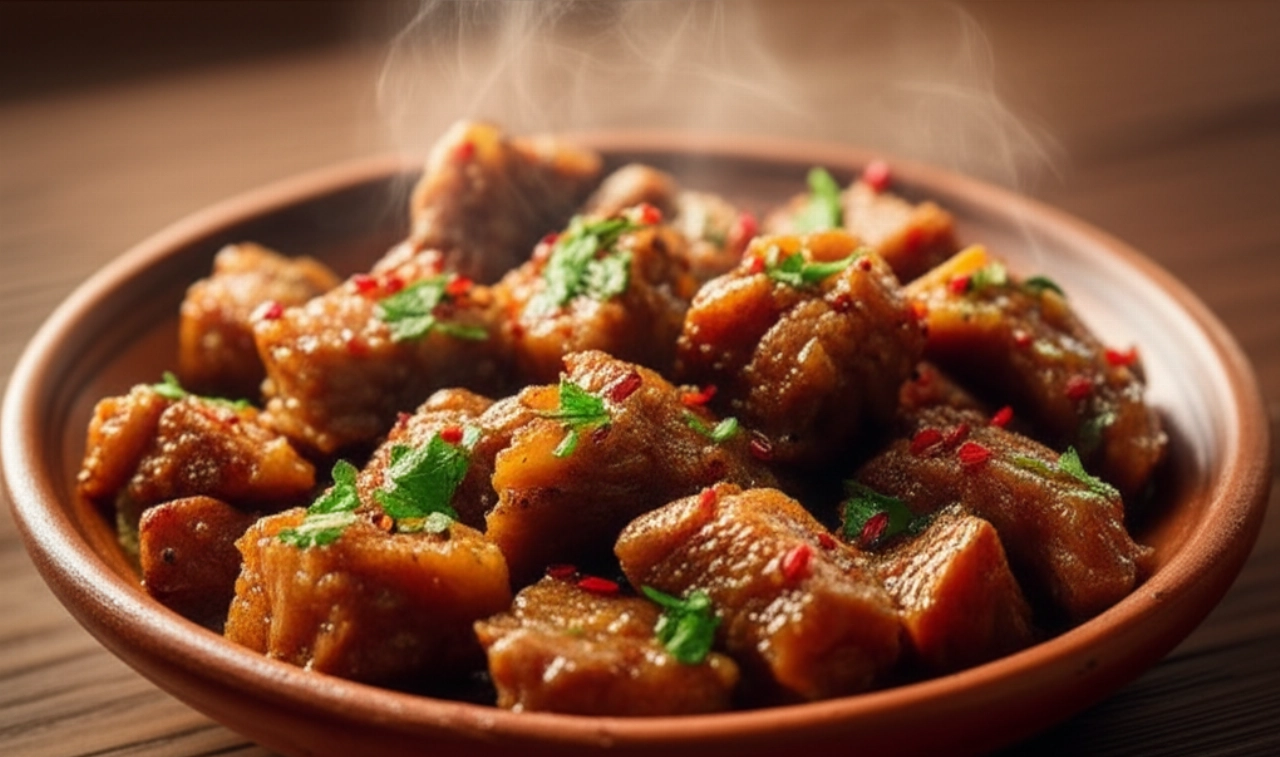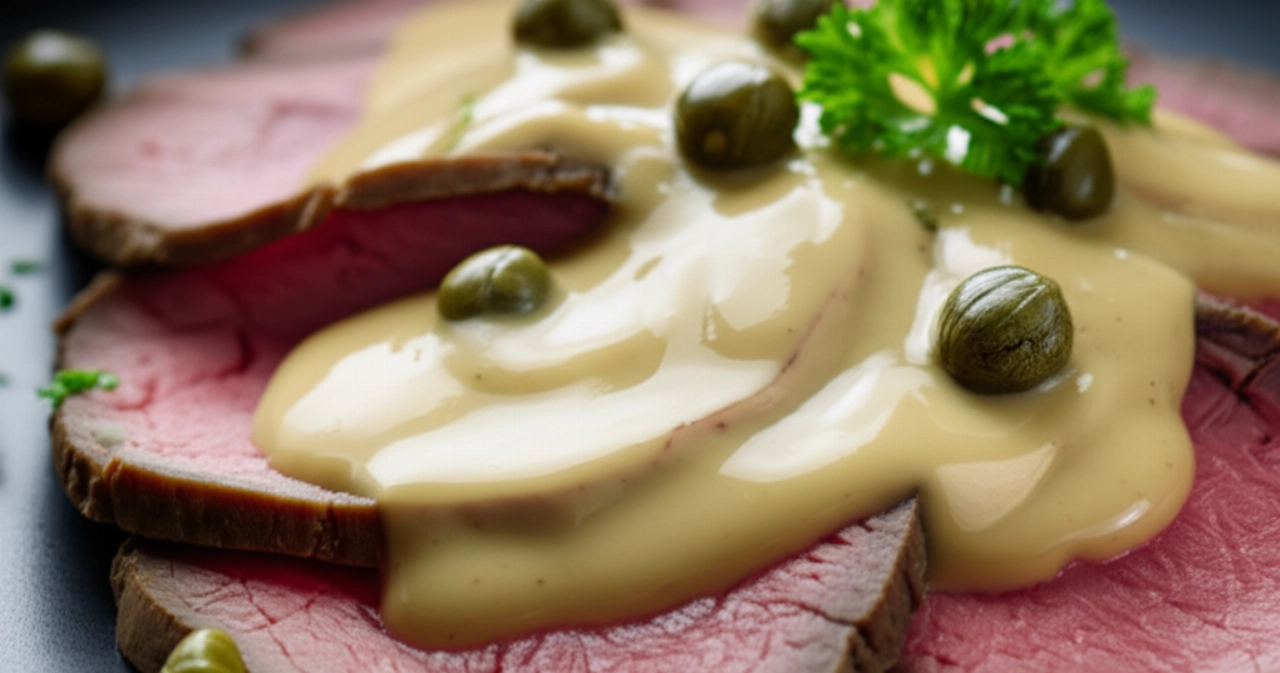There's a dish that, more than any other, evokes the image of a lit fireplace, family Sundays, and heart-warming flavors: Bollito Misto. It's not just a main course; it's a ritual, a celebration of conviviality and the richness of Piedmontese cuisine.
But let's face it, the idea of preparing it can be daunting. Which cuts to choose? How to get tender, non-fibrous meats? And the broth, how to make it clear and flavorful? The fear of wasting precious ingredients or not achieving that authentic traditional taste is real. Finding the right recipe, one that guides you without leaving you in doubt, seems like a challenge.
Make yourself comfortable, because on this page you won't just find a list of ingredients, but the definitive guide, full of tricks and tips, to prepare the most tender and flavorful Bollito Misto of your life. I'll reveal the secrets to getting incredibly tender meats and a clear, fragrant broth, with all the traditional cuts and perfect sauces for a culinary experience that will make you feel like you're in Piedmont, without fear of making mistakes. Success is guaranteed, and your guests will ask for seconds!

Smart Ingredients: The Choice That Makes a Difference for a Perfect Bollito Misto
The secret to an excellent Bollito Misto begins with ingredient selection. It's not just about quantity, but quality and understanding the role of each component. Here's what you need and why:
For the Meat (the traditional cuts, at least 7!)
- Beef Rump: A lean but flavorful cut, which gives structure to the broth and remains tender.
- Brisket Point: Rich in connective tissue, which transforms into gelatin with long cooking, making the meat juicy and the broth full-bodied.
- Oxtail: Gives an intense flavor and a unique texture, thanks to the presence of cartilage.
- Veal Tongue: An indispensable classic, with a delicate flavor and a very soft texture if cooked perfectly.
- Veal Head: For true connoisseurs, it provides an unmistakable gelatinous quality and flavor.
- Cotechino or Zampone: These should be cooked separately so as not to alter the flavor of the main broth, but they are essential for the completeness of the dish.
- Hen or Capon: Adds a sweeter flavor note and a richer broth.
Grandma's tip: Don't be afraid to ask your trusted butcher for the specific cuts for bollito. He'll know how to advise you best!
For the Aromatic Broth
- Water: Plenty, to completely cover the meats.
- Vegetables: 2 carrots, 2 celery stalks, 2 onions (one with cloves stuck in it, for an enveloping aroma). These aromatics are the base of the broth's flavor.
- Aromatics: Coarse salt (season sparingly, you can adjust at the end), black peppercorns, a few bay leaves.
For the Accompanying Sauces (essential!)
Bollito Misto wouldn't be the same without its sauces. They are what complete the masterpiece:
- Bagnetto Verde (Green Sauce): Made with parsley, garlic, anchovies, breadcrumbs, and vinegar. Fresh and pungent, it balances the richness of the meat.
- Bagnetto Rosso (or Red Sauce): With tomato, bell peppers, carrots, onions, and vinegar. Sweet and slightly acidic, a classic.
- Mostarda di Cremona (Cremona Mustard Fruit): Candied fruit immersed in mustard-flavored syrup. Its sweet-spicy contrast is surprising.
- Cren Sauce (Horseradish): For those who love bold flavors, a spicy note that cleanses the palate.
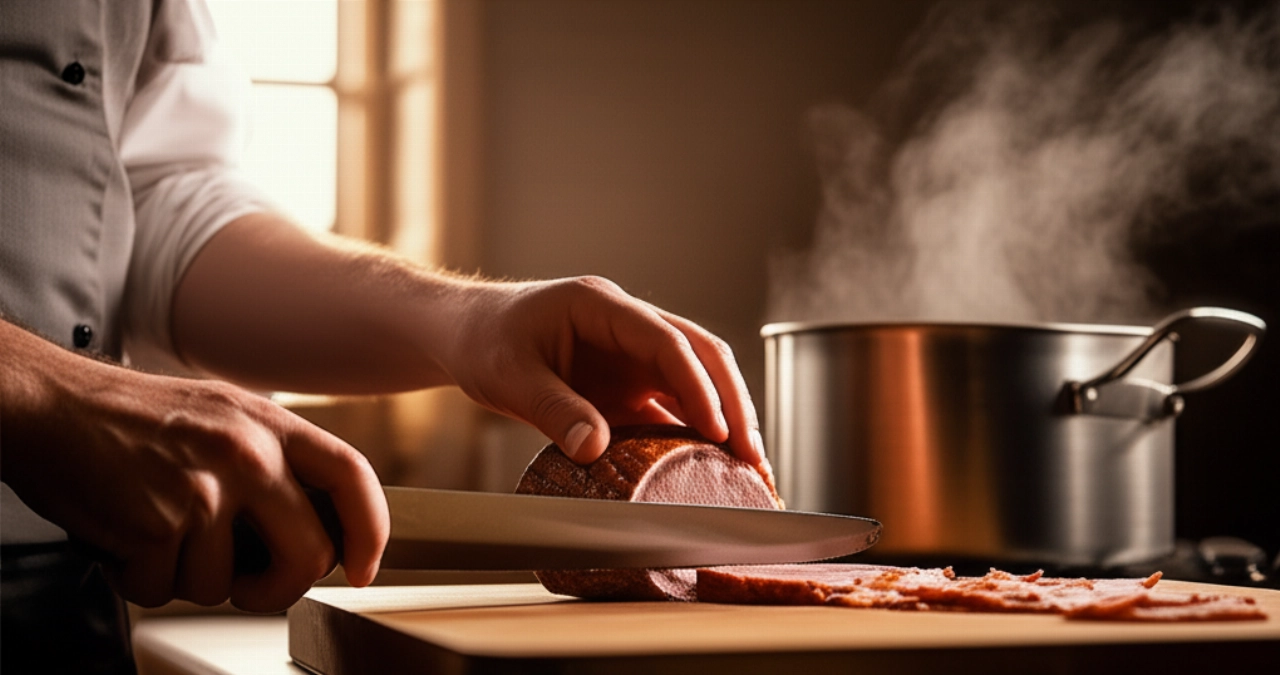
3 Mistakes to Avoid for a Tender and Flavorful Bollito Misto
Preparing Bollito Misto is an art, but also a science. Avoiding these common mistakes will guarantee an impeccable result:
1. Putting Meat in Cold Water (or Getting the Initial Temperature Wrong)
Why it's a mistake: If your goal is a flavorful broth, start with cold water. But if you want incredibly tender and juicy meats (as desired for bollito!), you must immerse the meat in already boiling, salted water. The thermal shock seals the juices inside the meat, keeping it soft and flavorful. Only the hen/capon and vegetables for the broth can start in cold water to extract maximum flavor.
2. Not Skimming the Broth Constantly
Why it's a mistake: During the initial cooking phases, impurities from the meat rise to the surface as foam. If you don't remove it with a slotted ladle, your broth will be cloudy and less pleasant to the palate. It's a step that requires patience, but it's fundamental for the clarity and final flavor.
3. Cooking All Cuts Together for the Same Amount of Time
Why it's a mistake: Each cut of meat has different cooking times to reach perfect tenderness. Tongue and head, for example, require longer cooking than rump. By cooking them all together, you risk having some pieces overcooked and others still tough. It's essential to add the cuts at different times or cook them separately, as with cotechino/zampone.
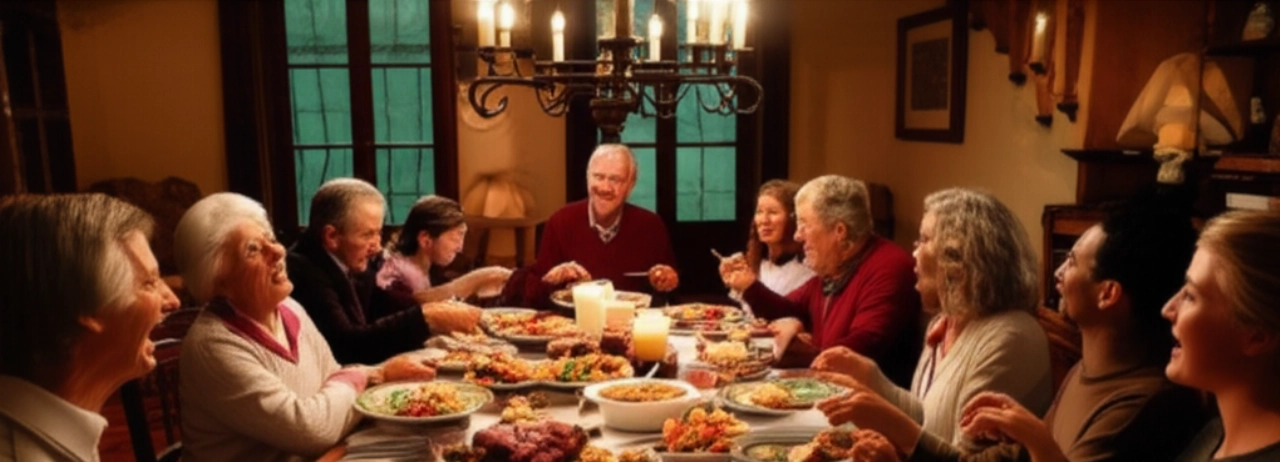
Grandma's Secret: The Magic Touch for an Unforgettable Bollito Misto
My grandmother, with her knowing hands and reassuring smile, always said that the true secret to a Bollito Misto wasn't just in the quality of the meat, but in patience and a small, simple gesture. After meticulously skimming the broth, she would always add a whole onion with a couple of cloves stuck in it. Not just for the aroma, but because she believed they absorbed the last impurities and gave the broth a unique, almost mystical depth of flavor. A touch of magic that transformed a good broth into an unforgettable one, a true liquid embrace that anticipated the tenderness of the meats.
Let's Prepare Bollito Misto Together: The Step-by-Step Guide to a Masterpiece
Now that you know the secrets and ingredients, let's get cooking. I'll guide you step by step, without rushing, for a result that will make you feel like a true guardian of tradition.
Phase 1: Preparing the Broth and Meat
- Prepare the Vegetables: Clean carrots, celery, and onions. In one of the onions, stick 2-3 cloves.
- Bring Water to a Boil: In a large pot (it should hold all the meat), bring plenty of salted water to a boil.
- Immerse the Toughest Cuts: When the water is boiling vigorously, immerse first the cuts of meat that require longer cooking times, such as brisket point, oxtail, and rump. Add the vegetables (carrots, celery, onions with cloves) and bay leaves.
- Skim Carefully: As soon as foam begins to form on the surface, remove it with a slotted ladle. This step is crucial for a clear broth. Continue skimming for the first 20-30 minutes.
- Add Other Cuts: After about 1 and a half hours of cooking (on low heat, simmering), add the tongue and head. If using hen or capon, you can add them now or at the beginning with the other cuts, depending on their size.
- Slow and Controlled Cooking: Let everything simmer on very low heat for at least 3-4 hours, or until all the meats are incredibly tender. The meat should almost fall apart at the touch of a fork.
Phase 2: Cooking the Cotechino/Zampone (Separately!)
- Prepare the Cotechino/Zampone: If using a pre-cooked cotechino or zampone, follow the package instructions. If it's raw, prick it in several places with a toothpick to prevent it from bursting during cooking.
- Separate Cooking: Cook it in a separate pot with cold water, bringing to a boil and letting it simmer for the indicated time (usually 2-3 hours for raw, less for pre-cooked). This is crucial to avoid contaminating the flavor of the main broth.
Phase 3: Sauces and Serving
- Prepare the Sauces: While the meat cooks, dedicate yourself to preparing the sauces. The Bagnetto Verde and Bagnetto Rosso are a must. You can also prepare homemade mostarda or buy a quality one.
- Drain and Slice: Once cooked, drain the meats from the broth (which you can use for an excellent tortellini broth or a risotto). Slice the meats into thick slices, arranging them on a large serving platter.
- Serve Hot: Serve the Bollito Misto piping hot, accompanied by the sauces in separate bowls. Don't forget good homemade bread for dipping in the broth or sauces!
Tips and Frequently Asked Questions about Bollito Misto
I know you might still have some doubts. Here are the answers to the most common questions to reassure you and guarantee a tremendous success!
What are the essential meat cuts for an authentic Bollito Misto?
For a Bollito Misto that respects the Piedmontese tradition, the essential cuts are at least seven: rump, brisket point, oxtail, tongue, head, cotechino (or zampone), and hen (or capon). Each contributes a unique texture and flavor, creating a perfect balance.
Can I prepare the broth in advance?
Absolutely yes! The broth can even be prepared the day before and stored in the refrigerator. In fact, sometimes resting makes it even more flavorful. When serving, simply heat it and immerse the sliced meats to gently warm them.
How can I store leftover Bollito Misto?
Cooked meats can be stored in the refrigerator immersed in their broth for 2-3 days. This will keep them tender and juicy. You can also freeze portions of meat and broth separately for future consumption. Thaw them slowly in the refrigerator before reheating.
What are the traditional sauces to pair with it?
The sauces are the soul of Bollito Misto! The most traditional are Bagnetto Verde (based on parsley and anchovies), Bagnetto Rosso (with tomato and bell peppers), and Mostarda di Cremona (candied mustard fruit). Don't forget cren sauce (horseradish) for a spicy kick.
Why isn't my meat tender?
Meat tenderness depends on several factors: the quality of the cuts, the cooking temperature (it should be a very gentle simmer, not a vigorous boil), and cooking times. Make sure you don't rush and respect the indicated times for each type of meat. Too high heat or insufficient cooking are the enemies of tenderness.
Your Masterpiece is Ready: An Embrace of Flavor and Tradition!
There you have it! Now you no longer just have a recipe, but all the secrets to bring to the table a Bollito Misto that tastes of home, tradition, and love. A dish that is not just food, but an experience, a story of authentic flavors that will win the heart of anyone who tastes it.
Don't be afraid to experiment and make this dish your own. Cooking is an act of creativity, and with this solid foundation, you'll see that applause won't be lacking. Every bite will be a journey into the heart of Piedmont, a true embrace of flavor.
Have you prepared your Bollito Misto following our tips? We're very curious to see your masterpiece! Leave a comment below, tell us about your experience, or share a photo on Instagram by tagging @CercaRicette.it. If you loved this journey into tradition, you can't miss our recipe for Risotto alla Milanese or for a perfect side dish like Crispy Roasted Potatoes.
